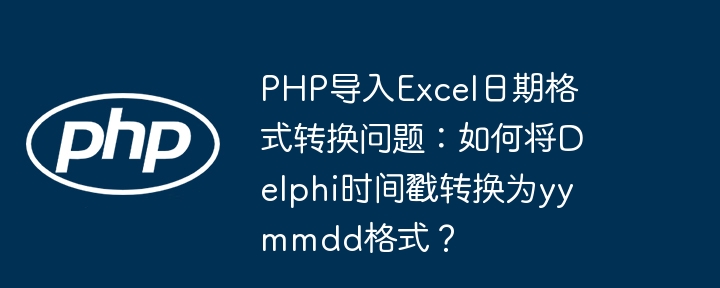
如何使用Hyperf框架進行身份認證
在現(xiàn)代的Web應用程序中,用戶身份認證是一個非常重要的功能。為了保護敏感信息和確保應用程序的安全性,身份認證可以確保只有經過驗證的用戶才能訪問受限資源。
Hyperf是一個基于swoole的高性能php框架,提供了很多現(xiàn)代化和高效的功能和工具。在Hyperf框架中,我們可以使用多種方法來實現(xiàn)身份認證,下面將介紹其中兩種常用的方法。
JWT是一種開放標準(RFC 7519),它定義了一個簡潔的、自包含的方法,用于在通信雙方之間安全地傳輸信息。在Hyperf框架中,我們可以使用lcobucci/jwt擴展庫來實現(xiàn)JWT的生成和驗證。
首先,我們需要在composer.json文件中添加lcobucci/jwt庫的依賴項:
"require": { "lcobucci/jwt": "^3.4" }
然后執(zhí)行composer update命令安裝依賴項。
接下來,我們可以創(chuàng)建一個JwtAuthenticator類,用于生成和驗證JWT:
<?php declare(strict_types=1); namespace AppAuth; use HyperfExtAuthAuthenticatable; use HyperfExtAuthContractsAuthenticatorInterface; use LcobucciJWTConfiguration; use LcobucciJWTToken; class JwtAuthenticator implements AuthenticatorInterface { private Configuration $configuration; public function __construct(Configuration $configuration) { $this->configuration = $configuration; } public function validateToken(string $token): bool { $parsedToken = $this->configuration->parser()->parse($token); $isVerified = $this->configuration->validator()->validate($parsedToken, ...$this->configuration->validationConstraints()); return $isVerified; } public function generateToken(Authenticatable $user): string { $builder = $this->configuration->createBuilder(); $builder->issuedBy('your_issuer') ->issuedAt(new DateTimeImmutable()) ->expiresAt((new DateTimeImmutable())->modify('+1 hour')) ->withClaim('sub', (string) $user->getAuthIdentifier()); $token = $builder->getToken($this->configuration->signer(), $this->configuration->signingKey()); return $token->toString(); } }
然后,我們需要在Hyperf框架的容器中注冊JwtAuthenticator類:
HyperfUtilsApplicationContext::getContainer()->define(AppAuthJwtAuthenticator::class, function (PsrContainerContainerInterface $container) { $configuration = LcobucciJWTConfiguration::forAsymmetricSigner( new LcobucciJWTSignerRsaSha256(), LcobucciJWTSignerKeyLocalFileReference::file('path/to/private/key.pem') ); return new AppAuthJwtAuthenticator($configuration); });
最后,在需要認證的路由或控制器方法中,我們可以使用JwtAuthenticator類來驗證用戶的JWT:
<?php declare(strict_types=1); namespace AppController; use AppAuthJwtAuthenticator; use HyperfHttpServerAnnotationController; use HyperfHttpServerAnnotationRequestMapping; /** * @Controller(prefix="/api") */ class ApiController { private JwtAuthenticator $authenticator; public function __construct(JwtAuthenticator $authenticator) { $this->authenticator = $authenticator; } /** * @RequestMapping(path="profile", methods="GET") */ public function profile() { $token = $this->request->getHeader('Authorization')[0] ?? ''; $token = str_replace('Bearer ', '', $token); if (!$this->authenticator->validateToken($token)) { // Token驗證失敗,返回錯誤響應 return 'Unauthorized'; } // Token驗證成功,返回用戶信息 return $this->authenticator->getUserByToken($token); } }
- 使用Session
除了JWT認證,Hyperf框架也支持使用Session進行身份認證。我們可以通過配置文件來啟用Session認證功能。
首先,我們需要在配置文件config/autoload/session.php中進行相應的配置,例如:
return [ 'handler' => [ 'class' => HyperfRedisSessionHandler::class, 'options' => [ 'pool' => 'default', ], ], ];
然后,在需要認證的路由或控制器方法中,我們可以使用Hyperf框架提供的AuthManager類來驗證用戶的Session:
<?php declare(strict_types=1); namespace AppController; use HyperfHttpServerAnnotationController; use HyperfHttpServerAnnotationRequestMapping; use HyperfExtAuthContractsAuthManagerInterface; /** * @Controller(prefix="/api") */ class ApiController { private AuthManagerInterface $authManager; public function __construct(AuthManagerInterface $authManager) { $this->authManager = $authManager; } /** * @RequestMapping(path="profile", methods="GET") */ public function profile() { if (!$this->authManager->check()) { // 用戶未登錄,返回錯誤響應 return 'Unauthorized'; } // 用戶已登錄,返回用戶信息 return $this->authManager->user(); } }
在上述代碼中,AuthManagerInterface接口提供了許多用于認證和用戶操作的方法,具體可根據(jù)實際需求進行調用。
以上是使用Hyperf框架進行身份認證的兩種常用方法,通過JWT或者Session來實現(xiàn)用戶身份驗證。根據(jù)實際需求和項目特點,選擇合適的方法以確保應用程序的安全性和用戶體驗。在實際開發(fā)中,可以根據(jù)框架提供的文檔和示例代碼深入了解更多高級用法和最佳實踐。



















